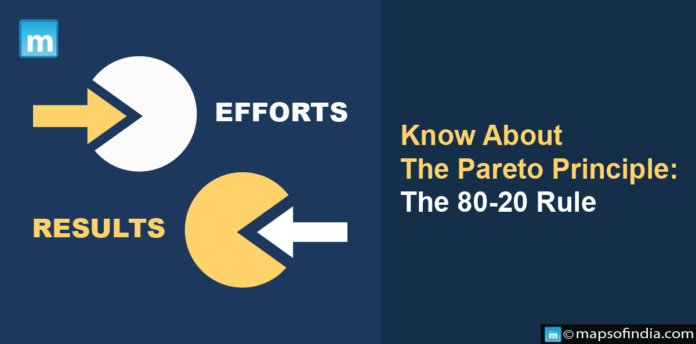The Pareto Principle, commonly known as the 80-20 rule, is a theory that states that 80% of outcomes result from 20% of causes. It is a universal principle that can be applied to various situations, from business to personal relationships to the natural world.
Emergence of The Principle
An Italian economist, Vilfredo Pareto, discovered the Pareto Principle in the late 1800s. He was interested in the distribution of wealth and income and realised that a small segment of the population possessed a disproportionate amount of wealth. Pareto was looking at the distribution of peas in his garden one day. He found that 20% of the plants produced 80% of the peas. This finding prompted him to hypothesise the existence of a general principle, which he named the “Pareto Principle”. To put his idea to the test, Pareto began collecting statistics on the distribution of wealth and income in various countries. He discovered that the Pareto Principle held in every country he investigated. For example, he found that 20% of the people had 80% of the land in Italy.
Putting The Principle Into Use
Here are some tips on how to use the Pareto Principle in your life:
-
Identify the 20% that matters
The first stage is pinpointing the 20% of causes that account for 80% of the outcomes. This can be accomplished by tracking your time and resources and determining what produces the best results.
-
Focus on the 20% that matters
Once you’ve found the 20% that matters, you can devote your time and attention to those activities. This may imply removing or delegating fewer important tasks and focusing solely on the duties that matter the most.
-
Improve the 20% that matters
Finally, you can begin to work on the 20% that matters. This may involve obtaining new tools and resources or learning new skills.
Application of The Principle
Since its emergence, the Pareto Principle has been observed in many other different areas, including:
-
Business
80% of a company’s sales often come from sales by 20% of its clients, and 80% of a company’s profits are often produced by 20% of its goods. The Pareto Principle could be used by a business to find its most profitable goods and consumers. It might then direct its marketing and sales efforts on those specific products and customers.
-
Personal relationships
80% of our happiness often comes from 20% of our relationships. The Pareto Principle can be used to find the relationships that provide the most satisfaction to a person. They might then devote more time to those people and less to those who do not bring them as much happiness.
-
Natural world
20% of the world’s population consumes 80% of the world’s energy. A government could use the Pareto Principle to determine the industries that consume the most energy. They can then invest in renewable energy to lower their energy consumption. The Pareto Principle is a valuable tool that can help you improve your personal life, businesses, and the overall environment in various ways. Understanding how the Pareto Principle works allows you to focus your time and energy on the things that are most important to you.




